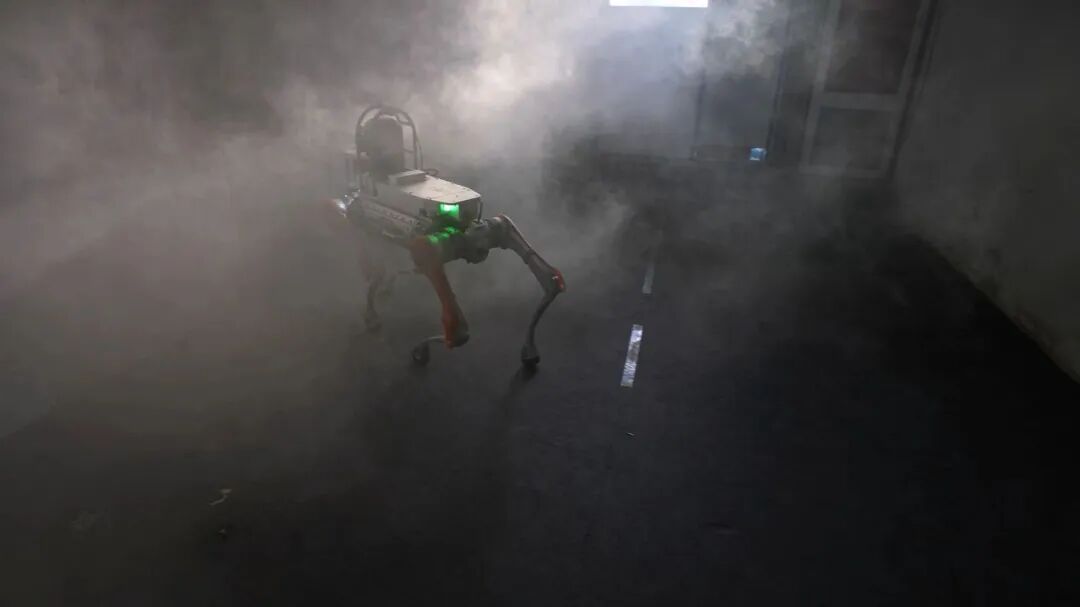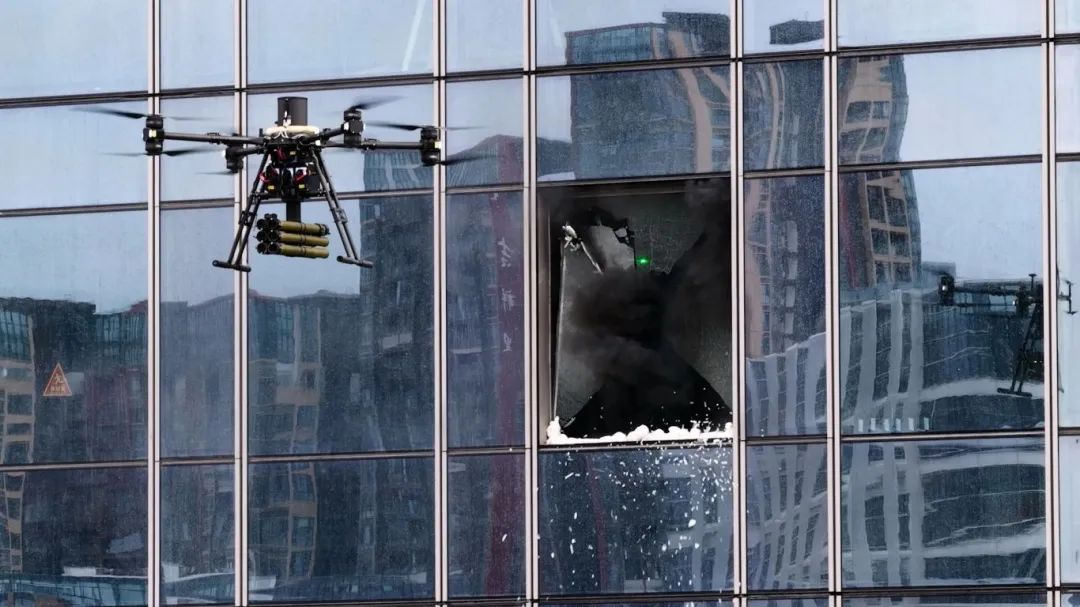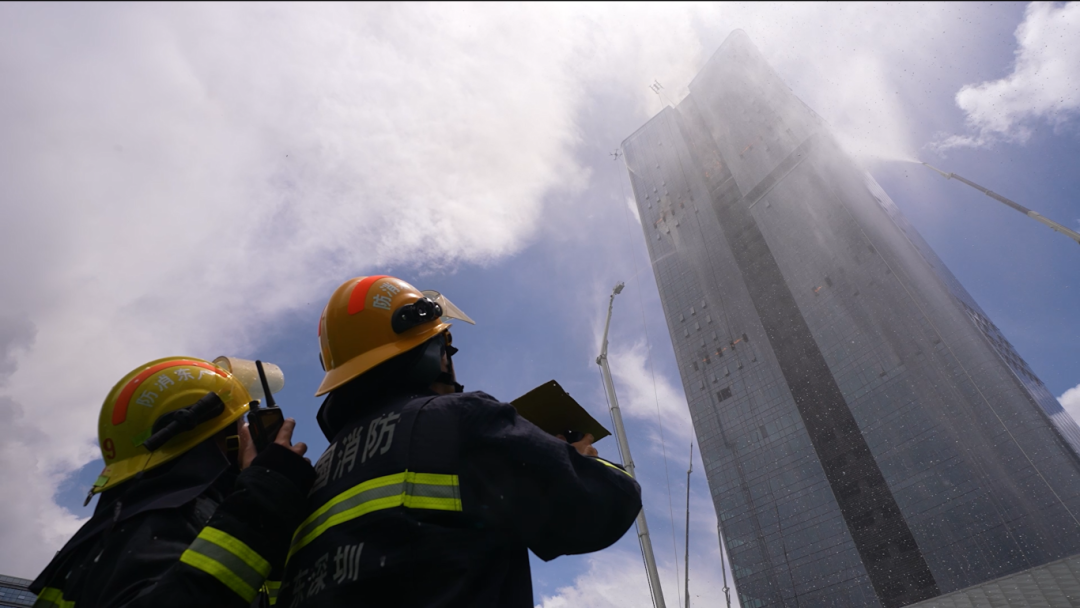Not long ago, the “Emergency Mission・2025” urban high-rise building fire fighting thematic exercises in Shenzhen shocked the staging.
This combat exercise focuses on the key problems of high-rise building fire fighting, the introduction of new equipment 10, 20 new technologies, innovation 14 new methods of warfare, to deal with high-rise building fires provide a valuable demonstration and reference.
Exercise simulated a 34-story ultra-high-rise building fire, a true replica of the fire spread three-dimensionally, a large number of people trapped and other extremely complex scenarios, a comprehensive test of the emergency rescue system in the extreme conditions of the ability to respond.
High-rise building fire fighting difficulties and obstacles
As we all know, the rescue of high-rise building fires need to face a lot of difficulties, these skyscrapers as “urban cliffs”, constructing a barrier that is difficult to overcome the traditional rescue.
Rapid spread of fire
High-rise buildings have a complex internal structure, containing a large number of flammable materials, and good air circulation, once the fire, the fire will spread rapidly in a very short time along the building’s vertical channels, ventilation ducts, forming a “three-dimensional fire”.
Flames and high-temperature smoke may spread to multiple floors within minutes, making it extremely difficult to extinguish the fire.
Evacuation of personnel difficult
High-rise buildings are densely populated and widely distributed. In the event of a fire, people need to escape through the limited evacuation routes downwards.
However, due to smoke, low visibility, narrow channels and other reasons, personnel evacuation is extremely slow. In tall buildings, the vertical evacuation distance is long and physically demanding, and many people may be stranded in the danger zone due to physical exhaustion during evacuation.
Limited access to heights
Traditional firefighting boarding equipment often has difficulty reaching the height of the fire-starting floor when confronted with ultra-high-rise buildings. This makes it impossible for firefighters to approach the fire source directly to extinguish the fire, and they can only attack from inside the building, facing many dangers such as high temperature, thick smoke and obstructed vision.
Communication security difficulties
Super-high-rise building internal signal shielding serious, traditional communication equipment is difficult to ensure effective communication between rescue personnel. This will lead to poor on-site command, information transfer is not timely, affecting the efficiency of firefighting and rescue co-operation.
Challenges of water and liquid supply
In a high-rise building fire, a large amount of water and fire-fighting agents need to be transported to the fire-starting floor. However, due to the pressure limitations of the water belt and the special structure of high-rise buildings, the traditional water supply is difficult to meet the demand for firefighting, water supply and liquid supply is not timely will seriously affect the effect of firefighting.
The power of traditional equipment is not satisfactory
It is the layers of barriers so that the shortcomings of the traditional rescue equipment exposed, these once the “main force of the fire” in high-rise buildings in front of the fire more apparent incompetence.
Water gun “shot not far”
Traditional water gun range is limited, in the face of high-rise building facade fire, it is difficult to jet the water to the fire point. Moreover, as the height of the floor increases, the pressure loss of the water belt will increase, resulting in insufficient water pressure of the water gun, affecting the effect of fire fighting.
Fire ladder “can’t climb high”
Ordinary fire ladders are limited in length and load-bearing capacity, and cannot meet the needs of evacuation and firefighting in ultra-high-rise building fires. Moreover, it takes time and space to set up a fire ladder, which is difficult to operate in a complex urban environment.
Conventional fire engines “can’t reach”
Conventional fire trucks are limited in height, for some high-rise buildings with a height of more than 100 meters, basically unable to play a role. In addition, the water supply capacity of the fire engine is also difficult to meet the needs of large-scale fire extinguishing.
The new quality of rescue power of the three-dimensional breakthrough
When the traditional rescue is in trouble, the power of science and technology is breaking the deadlock of high-rise building fire fighting. From the cloud wisdom center to the fire field steel pioneer, new quality rescue force with innovative equipment and cutting-edge technology, weaving a three-dimensional rescue network.
Cloud “intelligent brain” help accurate rescue
Intelligent information acquisition and transmission
In the exercise, after the fire, the 119 command center receiving officer with the help of advanced technical means to quickly locate the alarm, to achieve the “one-key” deployment of rescue forces.
The large screen of the on-site command department through the intelligent police system, quickly access to the building population heat map and other key information.
City patrol and defense drone swarm flew to the scene for high-altitude reconnaissance, the city eye of heaven through the building perimeter monitoring to view the situation in all directions, the real-time transmission of this information to the firefighters at all levels of combat terminals, to provide an accurate basis for decision-making.
Efficient rescue channel dredging
The vehicle-moving robot quickly transfers the surrounding vehicles to ensure that the fire trucks can quickly arrive at the fire scene and smoothly carry out their operations.
The safety officer utilizes the single integrated positioning system to grasp the physical condition and action track of each internal attacker in real time to ensure the safety of the rescue personnel.
Intelligent internal search and rescue
Under the harsh environment of high temperature and thick smoke inside the building, the firefighters of the reconnaissance team wore firefighting intelligent helmets and cooperated with the four-legged robot to carry out internal search and rescue work.

They will be real-time situation to the command headquarters for map transmission, through information technology positioning and intelligent assisted search, successfully find and transfer the trapped people, greatly improving the efficiency and accuracy of rescue.
“Pioneer” Rescue Forces Rush to the Front Line
Unmanned Aerial Vehicle (UAV) Team
Multi-rotor firefighting drone formation became the “rescue vanguard”; reconnaissance drone real-time construction of three-dimensional fire situation map; a number of large fire-fighting drones hovering 100 meters in the air, spraying compressed air foam to control the fire.
Glass-breaking drones accurately launch glass-breaking bombs to break the curtain wall glass and open up smoke channels. Heavy-duty drones break through the blockade, and accurately deliver respirators and first aid kits to the hands of the trapped. The ground-air integration of “unmanned combat cluster” greatly extends the rescue reach and greatly reduces the risk of combatants.

Fire-fighting and explosion-proof robot
At the drill site, fire and explosion-proof robots took the lead in breaking into the danger zone, continuously spraying high-intensity jets to suppress the fire and open the way for subsequent rescue. They are able to work stably in high temperature, thick smoke and other complex environments, effectively reducing the risk of danger to firefighters.
Smoke evacuation robot and reconnaissance robot
Smoke evacuation robots and water-driven smoke evacuation machines work in concert with the smoke prevention and exhaustion system in the building to continuously improve the environment of the fire scene. The reconnaissance robot turns on the thermal imaging and gas detection equipment to open up attack channels for the subsequent internal attackers, providing important fire scene information support.
Fighting Fire in Urban High-Rise Buildings
